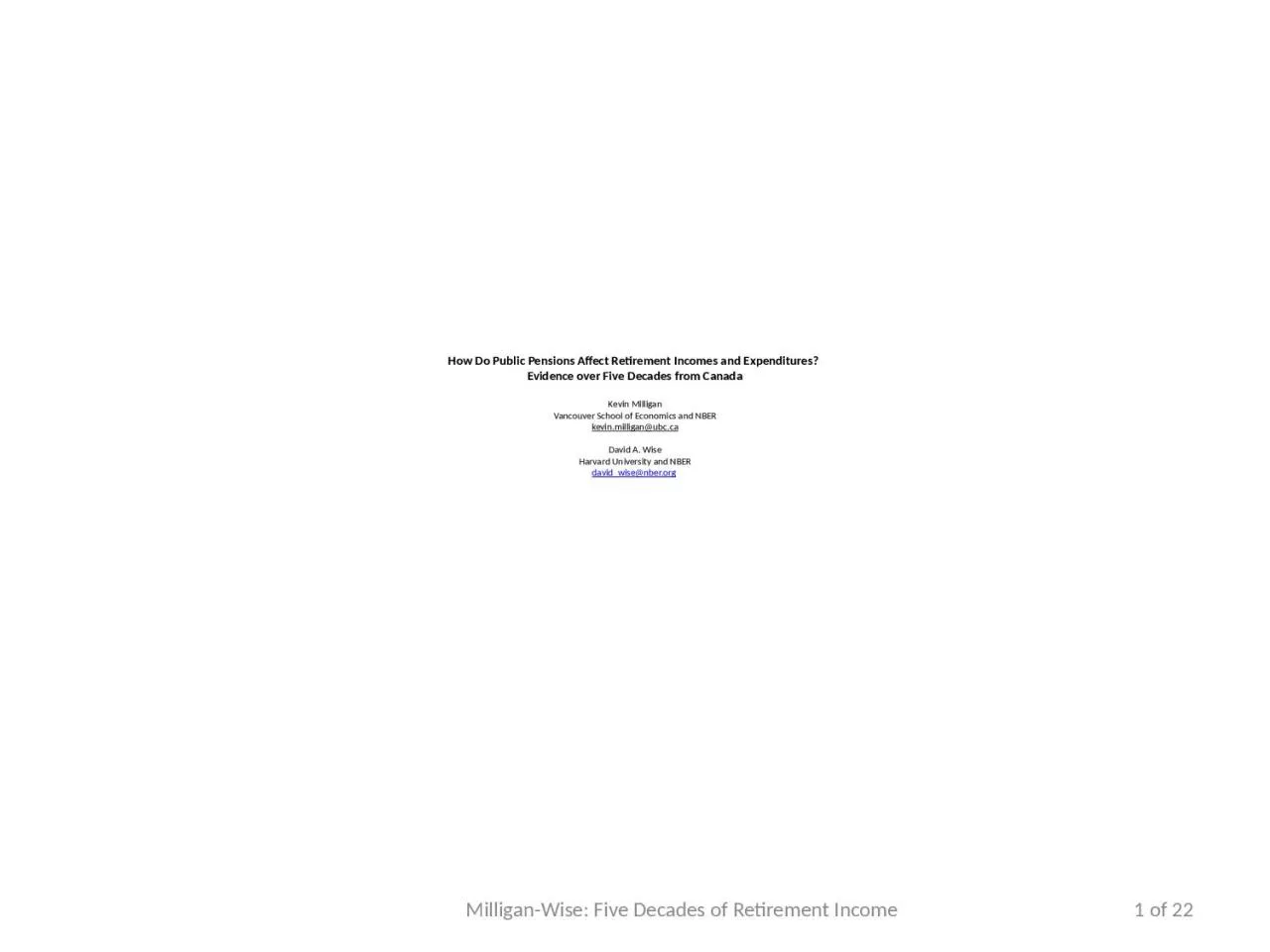PPT-How Do Public Pensions Affect Retirement Incomes and Expenditures?
Author : joyce | Published Date : 2023-11-20
Evidence over Five Decades from Canada Kevin Milligan Vancouver School of Economics and NBER kevinmilliganubcca David A Wise Harvard University and NBER davidwisenberorg
Presentation Embed Code
Download Presentation
Download Presentation The PPT/PDF document "How Do Public Pensions Affect Retiremen..." is the property of its rightful owner. Permission is granted to download and print the materials on this website for personal, non-commercial use only, and to display it on your personal computer provided you do not modify the materials and that you retain all copyright notices contained in the materials. By downloading content from our website, you accept the terms of this agreement.
How Do Public Pensions Affect Retirement Incomes and Expenditures?: Transcript
Download Rules Of Document
"How Do Public Pensions Affect Retirement Incomes and Expenditures?"The content belongs to its owner. You may download and print it for personal use, without modification, and keep all copyright notices. By downloading, you agree to these terms.
Related Documents














